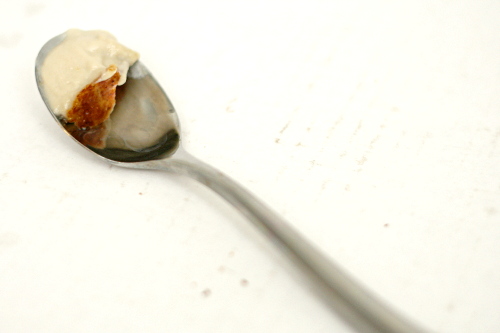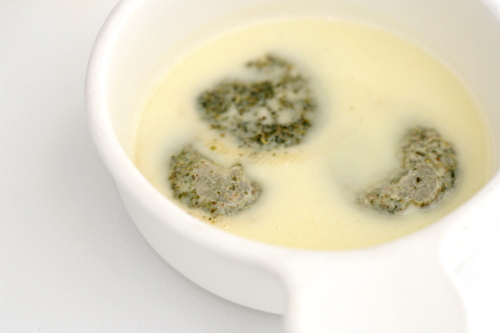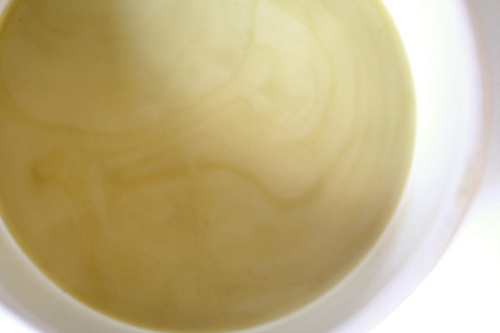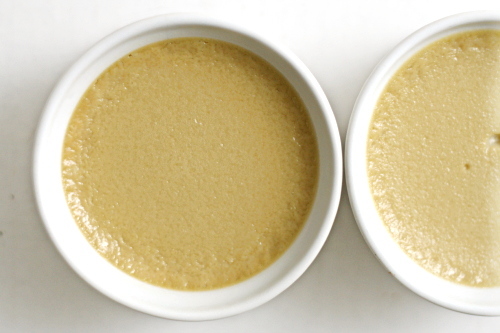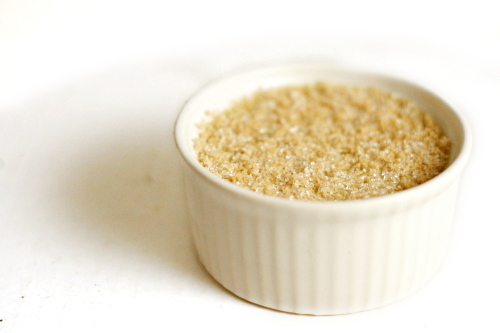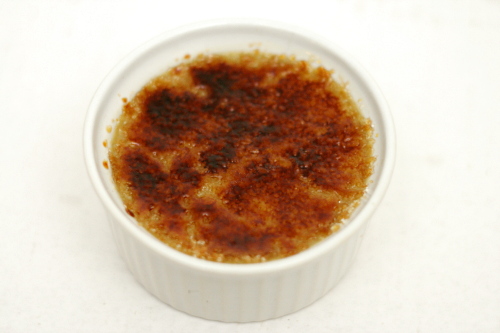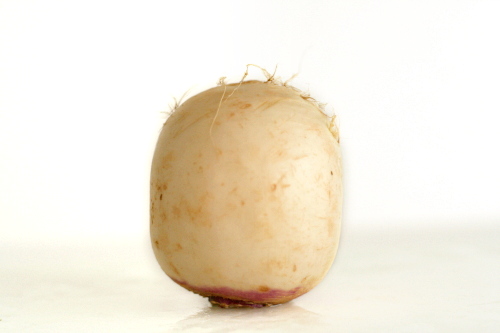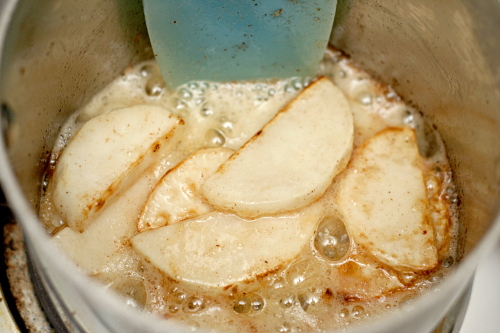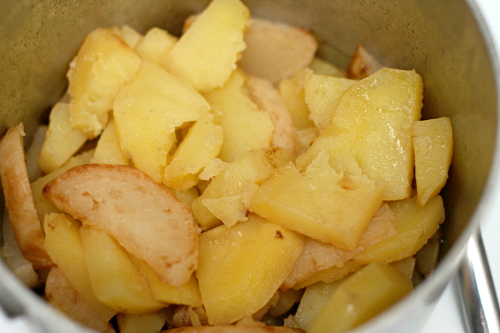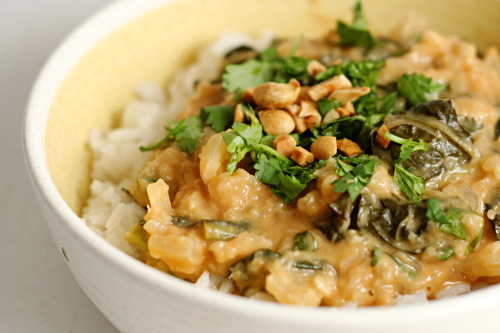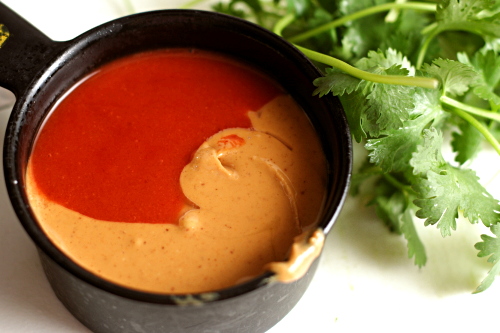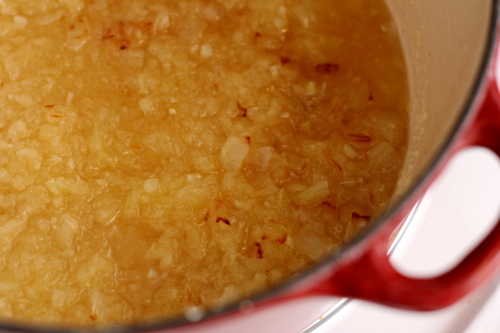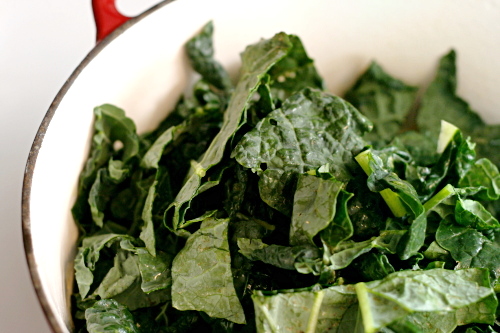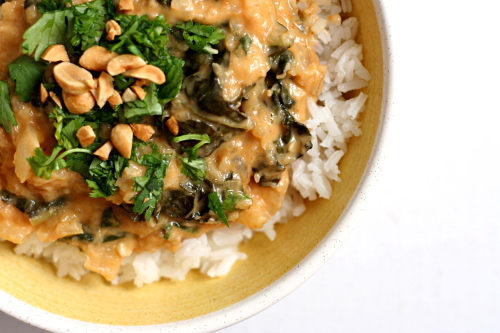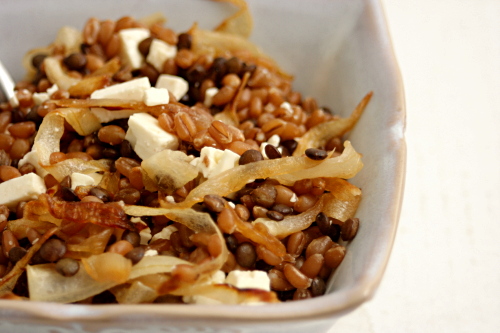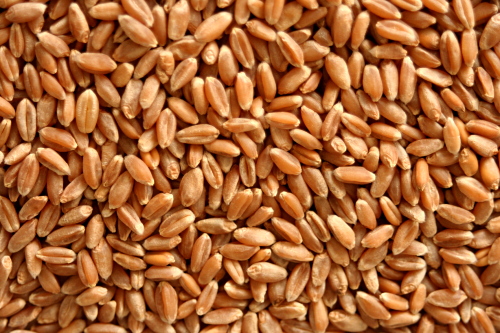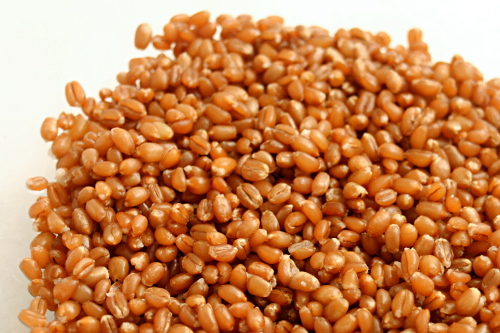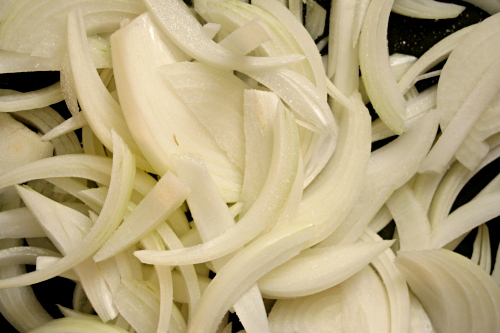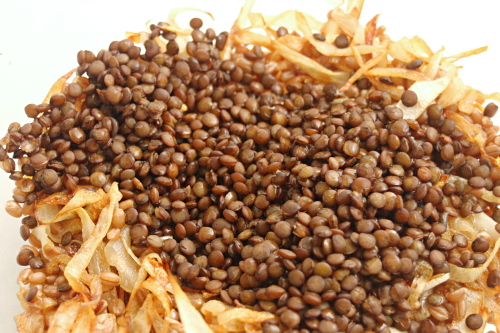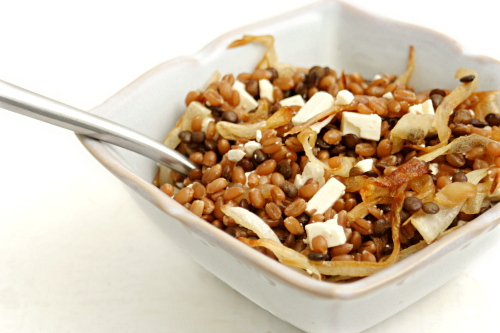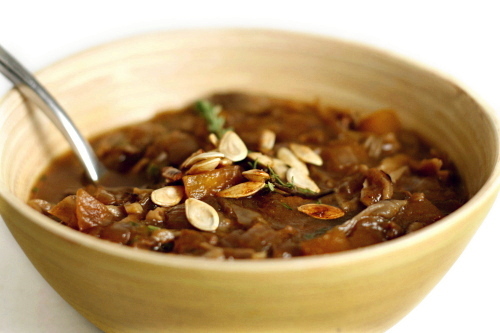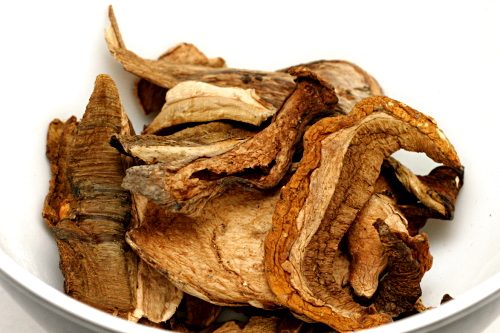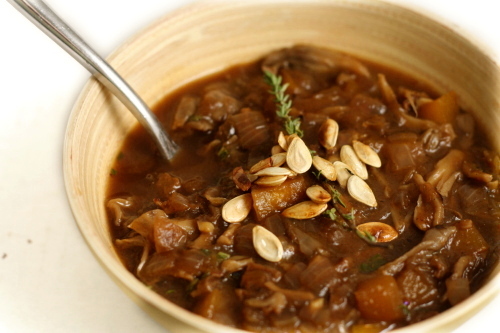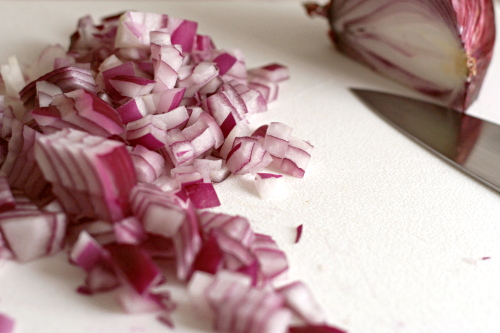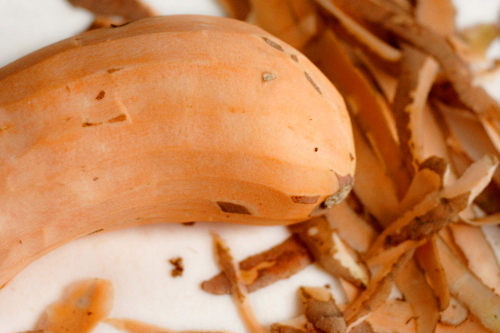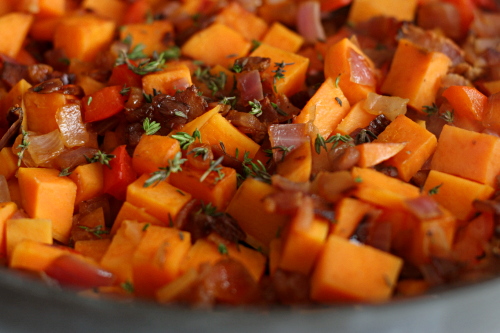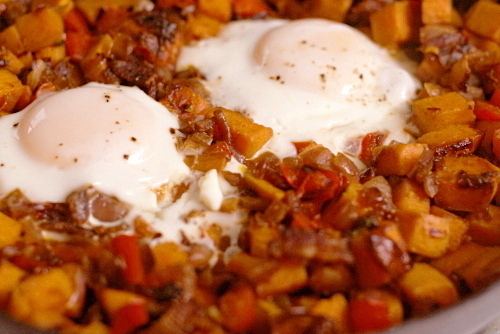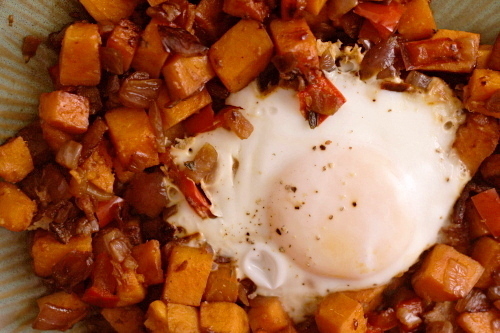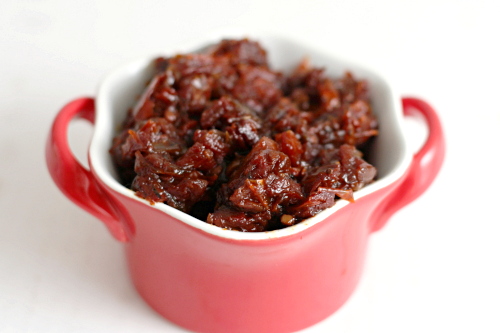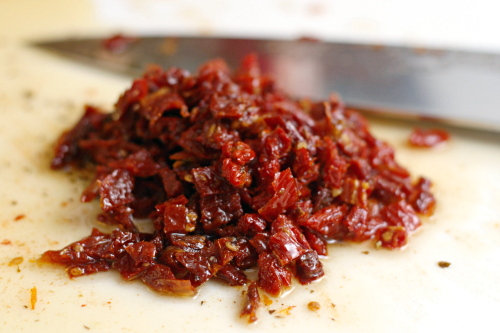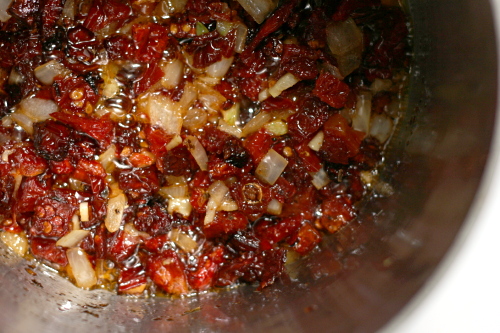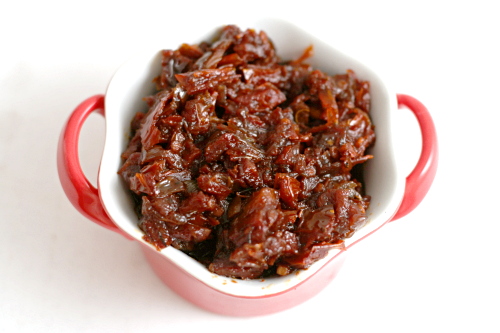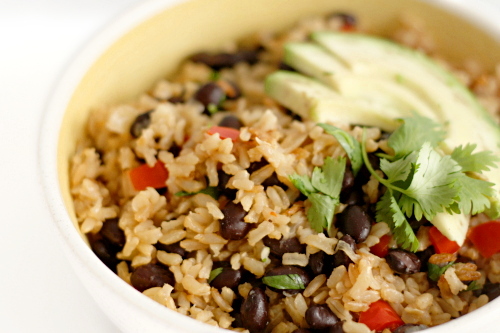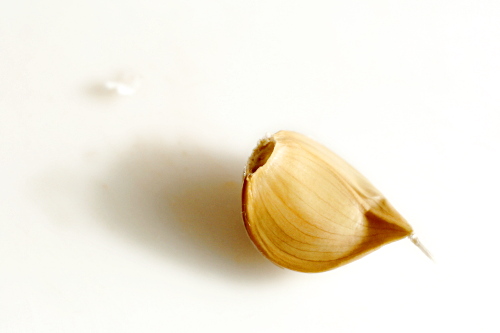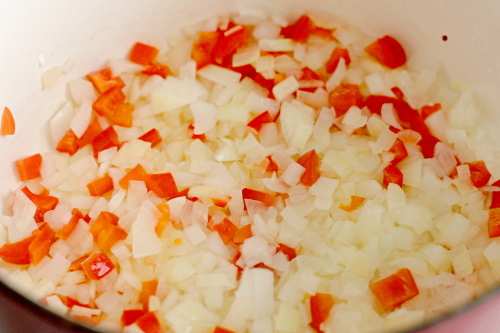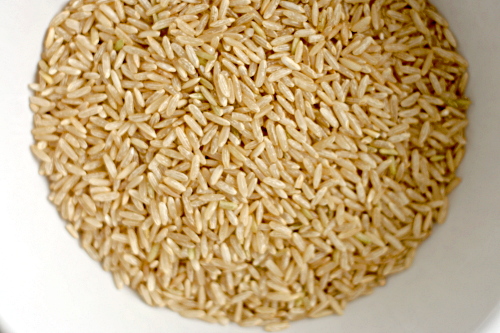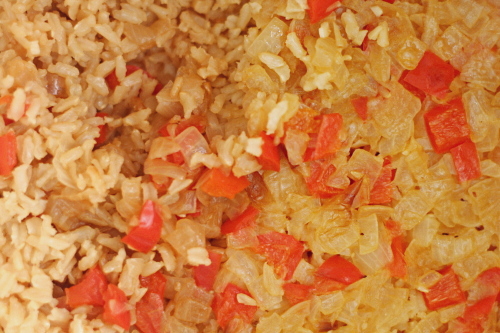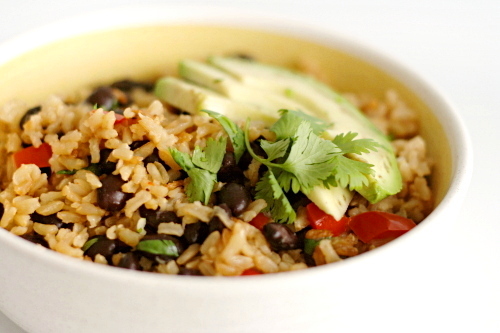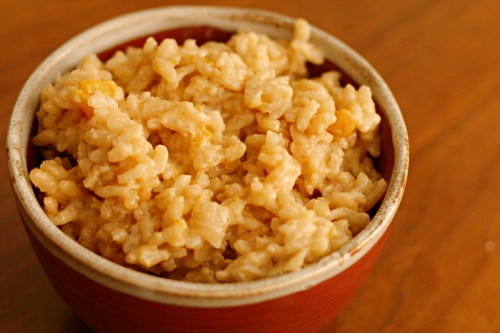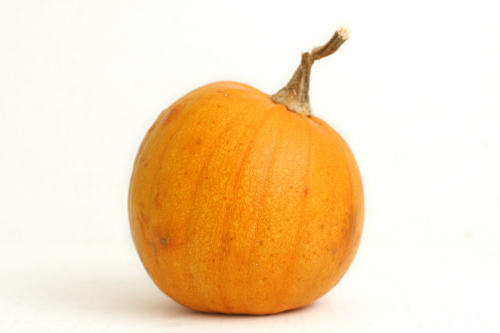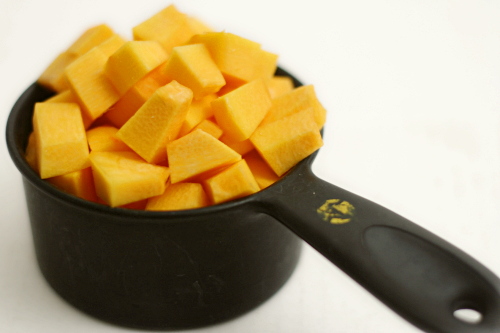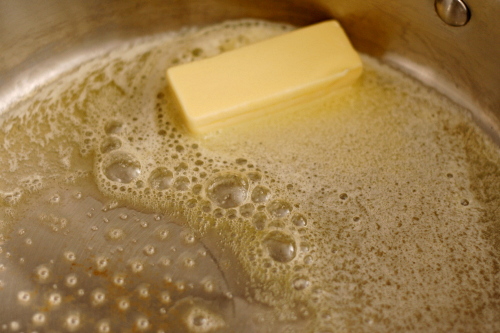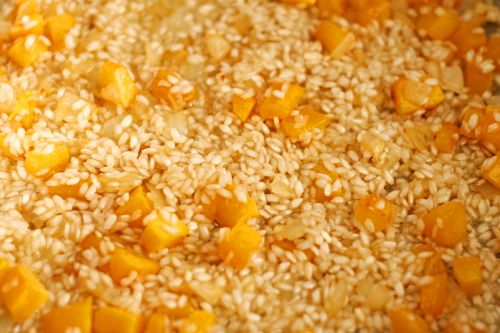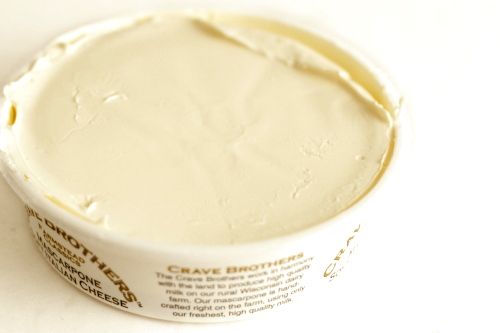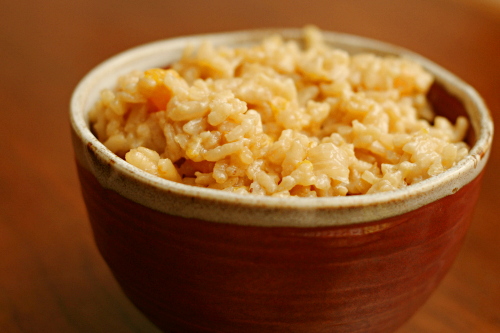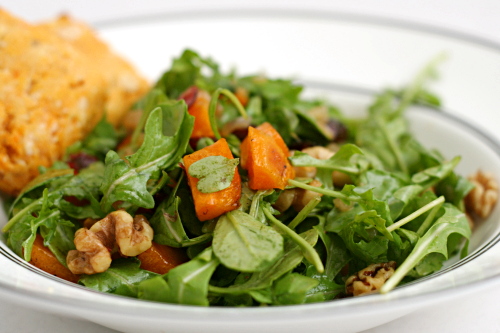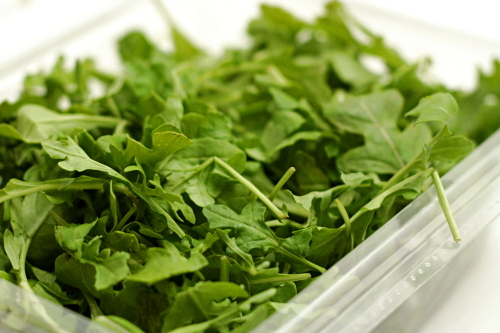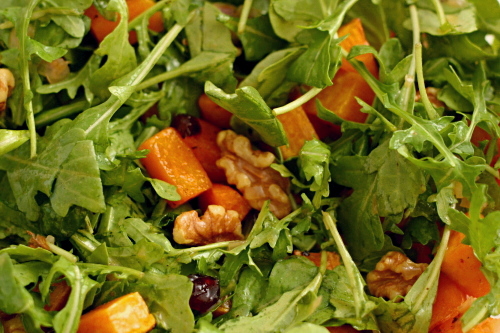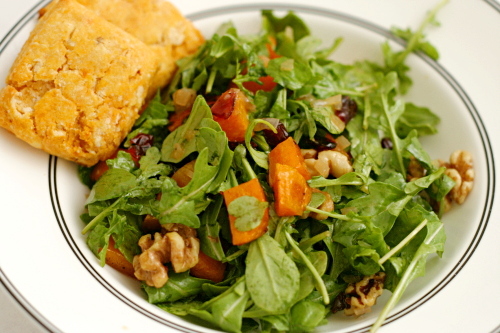Dave’s attitude toward restaurants has changed dramatically over the past few months, and I love it. He used to think of eating out as simply a way to get food with minimal effort; the faster he could get in and out, the better. I remember impatiently waiting for our orders to be taken, for the meal to arrive, and for the server to bring the bill.
Fortunately, after some fancy work-related dinners, he decided that eating at restaurants can be about more than filling a void. It’s about the whole experience – trying new foods, enjoying the company of your friends, choosing the right drink to compliment your meal. These days when we go out to eat, we take our time, starting with appetizers and ending with dessert and coffee.
After enjoying green tea crème brûlée at the end of a fancy schmancy Thai meal (which I sadly did not get to share), he kept talking about it later. It’s rare for a dessert to make such an impression on Dave. But crème brûlée is so simple to make at home, it almost seems like a waste to order it in a restaurant.
From his description, the restaurant’s version arrived in something similar to a tiny trough – a long, narrow oval. Dave specifically requested a similarly shaped dish when I made it at home, as he is full of obnoxiousness. Round ramekins it is!
But fun dishes is just about the only advantage restaurants have over home cooks when it comes to crème brûlée, which is not hard to make and requires no odd ingredients. Smooth and creamy, with just enough green tea flavor, topped with a crackling layer of caramelized sugar, I can see why Dave thought this was worth ordering out, but I’m glad we can enjoy it at home whenever we want.
One year ago: Country-Style Sourdough Bread
Printer Friendly Recipe
Green Tea Crème Brûlée
Makes 4
1¼ cups heavy cream
¼ cup whole milk
⅓ cup + 2 teaspoons granulated sugar
pinch table salt
3 green tea bags (or 1 tablespoon loose tea)
4 large egg yolks
1 teaspoon vanilla extract
2 teaspoons brown sugar
1. Adjust an oven rack to the lower-middle position and heat the oven to 300ºF.
2. Combine ½ cup cream and the milk, ⅓ cup sugar, and the salt in a medium saucepan; submerge the tea bags in the liquid; bring the mixture to a boil over medium heat, stirring occasionally to ensure that the sugar dissolves. Take the pan off of the heat and let the mixture steep for 15 minutes to infuse the flavors.
3. Meanwhile, place a kitchen towel in the bottom of a large baking dish or roasting pan and arrange flour 4- to 5-ounce ramekins (or shallow fluted dishes) on the towel. Bring a kettle or large saucepan of water to a boil over high heat.
4. After the cream has steeped, remove the tea bags or strain the loose tea; stir in the remaining ¾ cup cream to cool down the mixture. Whisk the yolks in a large bowl until they’re broken up and combined. Whisk about half of the cream mixture into the yolks until they’re loosened and combined; repeat with the remaining cream and the extract; whisk until the mixture is evenly colored and thoroughly combined. Strain through a fine-mesh strainer into a 2-quart measuring cup or pitcher (or clean medium bowl); discard the solids in the strainer. Evenly divide the mixture among the ramekins.
5. Carefully place the baking dish with the ramekins on an oven rack; pour boiling water into the dish, taking care not to splash water into the ramekins, until the water reaches two-thirds height of the ramekins. Bake until the centers of the custards are just barely set and are no longer sloshy, and a digital instant-read thermometer inserted in the center of one ramekin registers 170 to 175 degrees, 30 to 35 minutes (25 to 30 minutes for shallow fluted dishes). Begin checking the temperature about 5 minutes before the recommended time.
6. Transfer the ramekins to a wire rack; cool to room temperature, about 2 hours. Set the ramekins on a rimmed baking sheet, cover tightly with plastic wrap, and refrigerate until cold, at least 4 hours or up to 4 days.
7. Uncover the ramekins; if condensation has collected on the custards, place a paper towel on the surface to soak up moisture. Mix the 2 teaspoons granulated sugar with the brown sugar. Sprinkle each ramekin with about 1 teaspoon of the sugar mixture; tilt and tap the ramekins for even coverage. Ignite torch and caramelize sugar. Refrigerate the ramekins, uncovered, to re-chill, 30 to 45 minutes (but no longer); serve.
